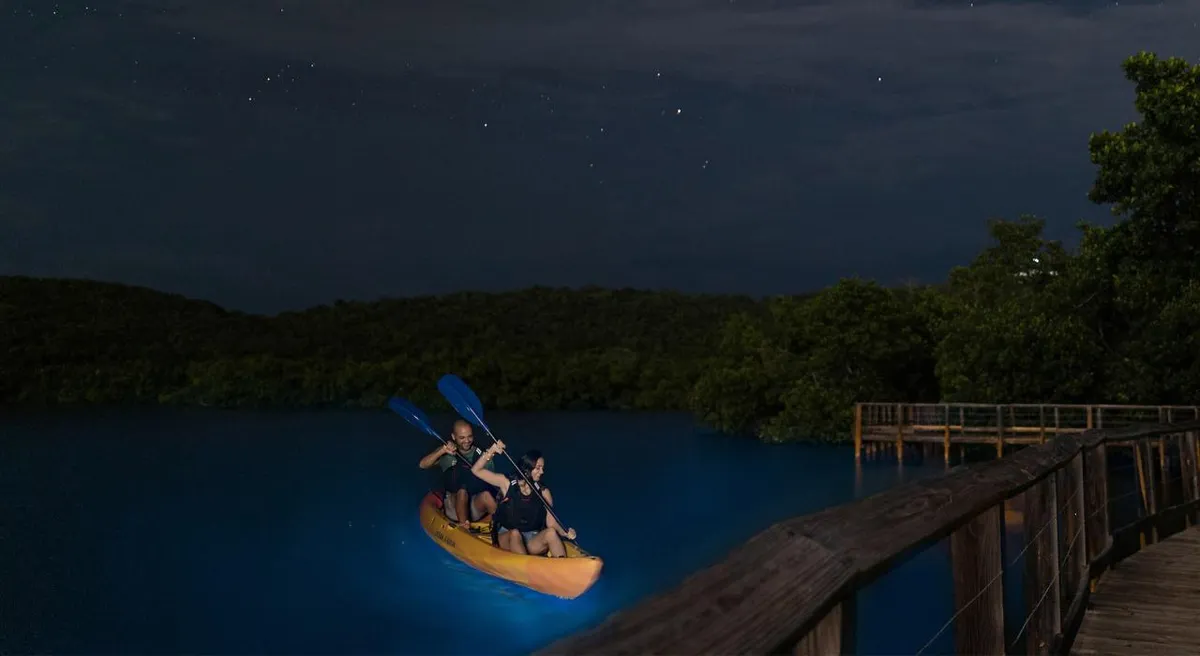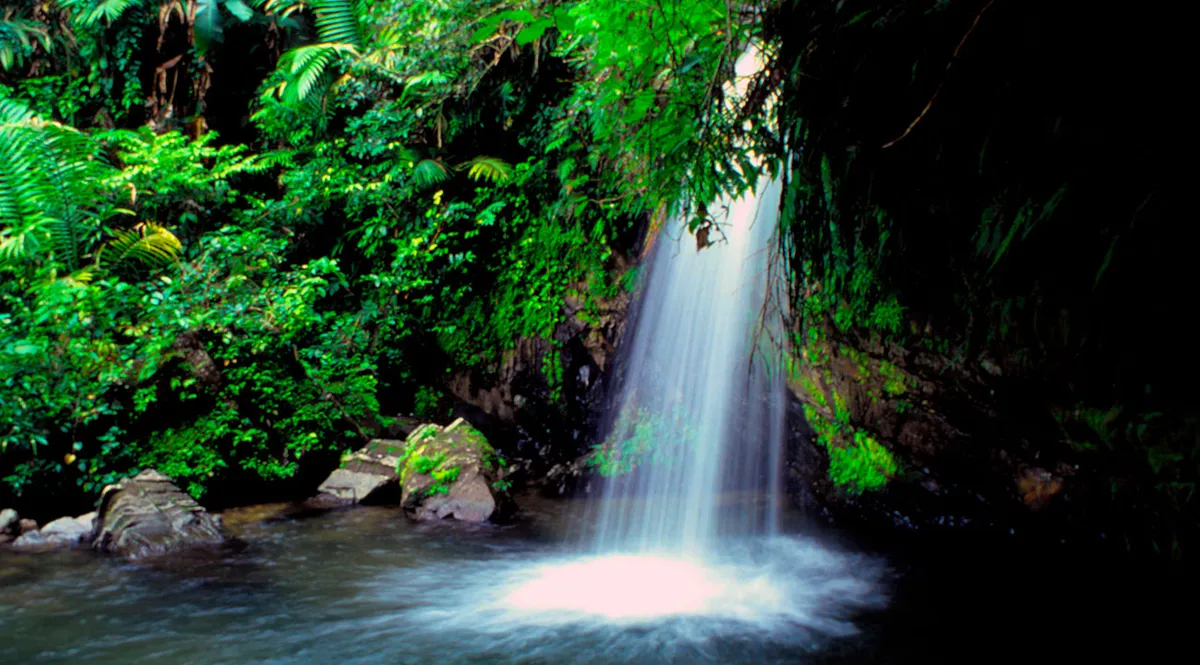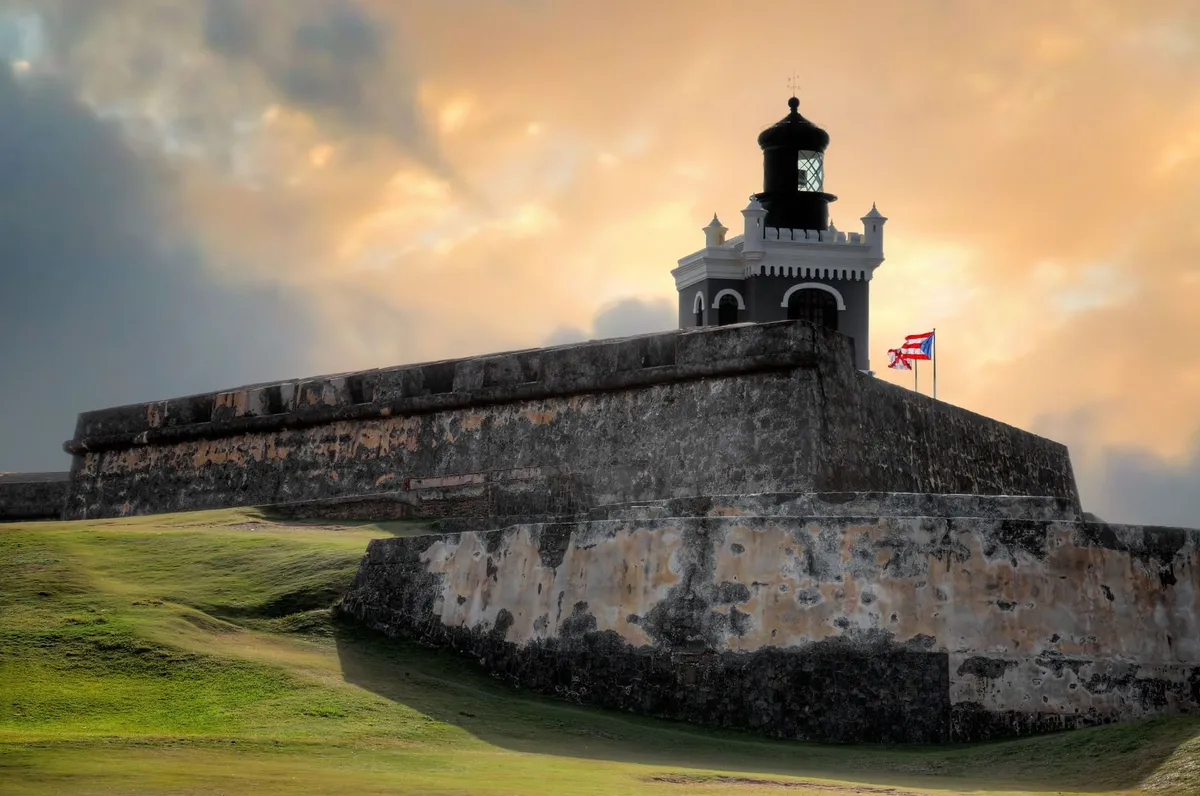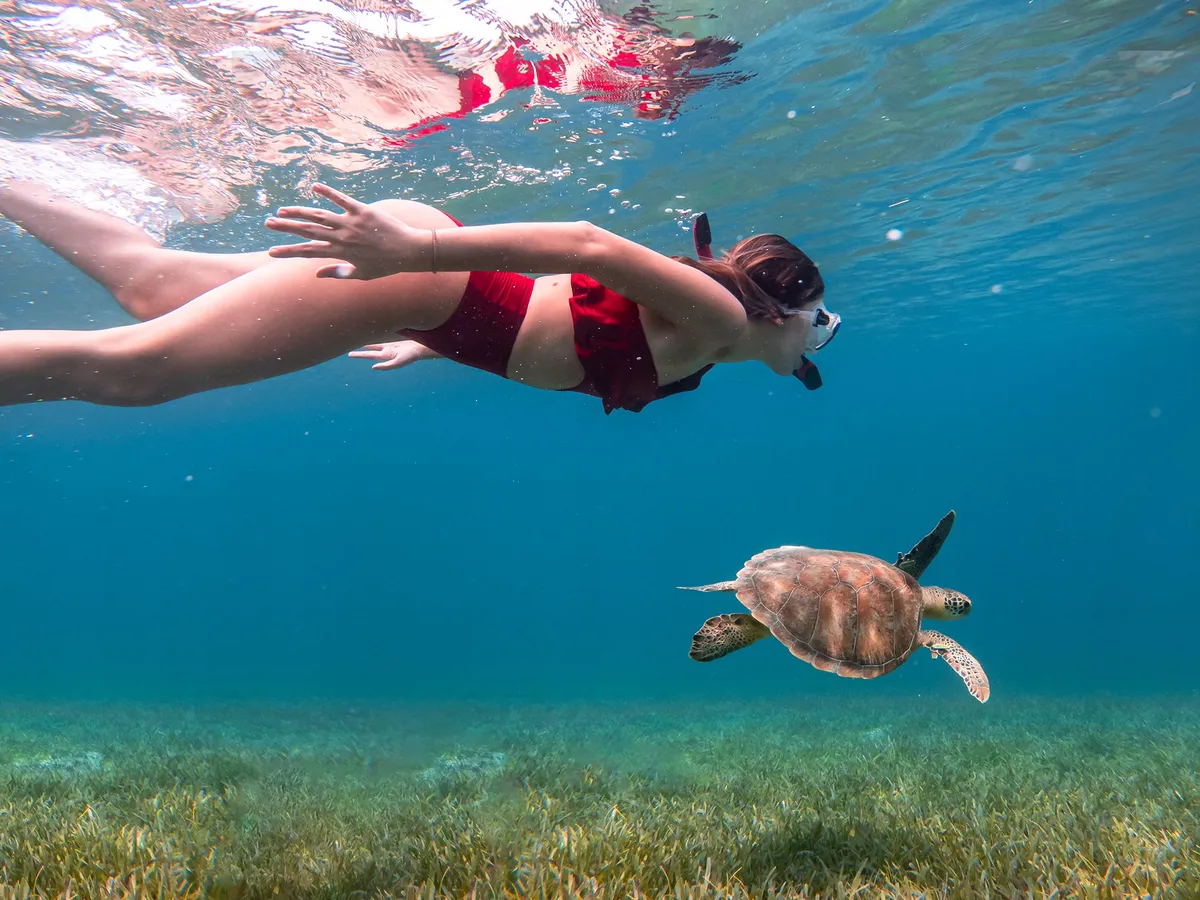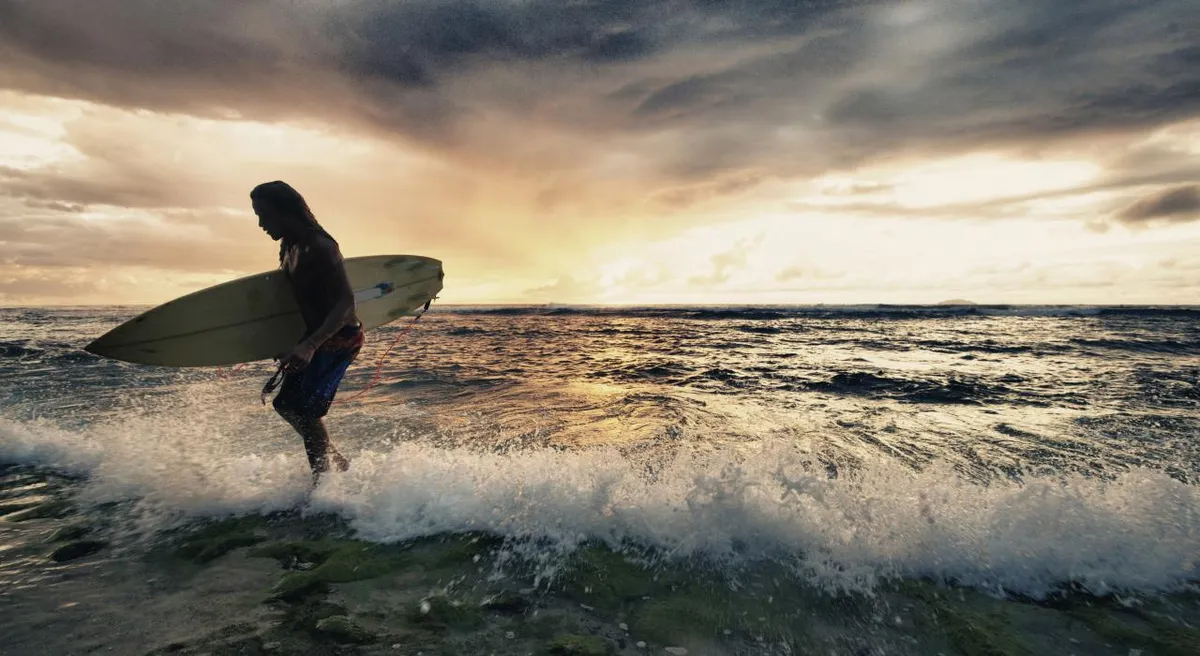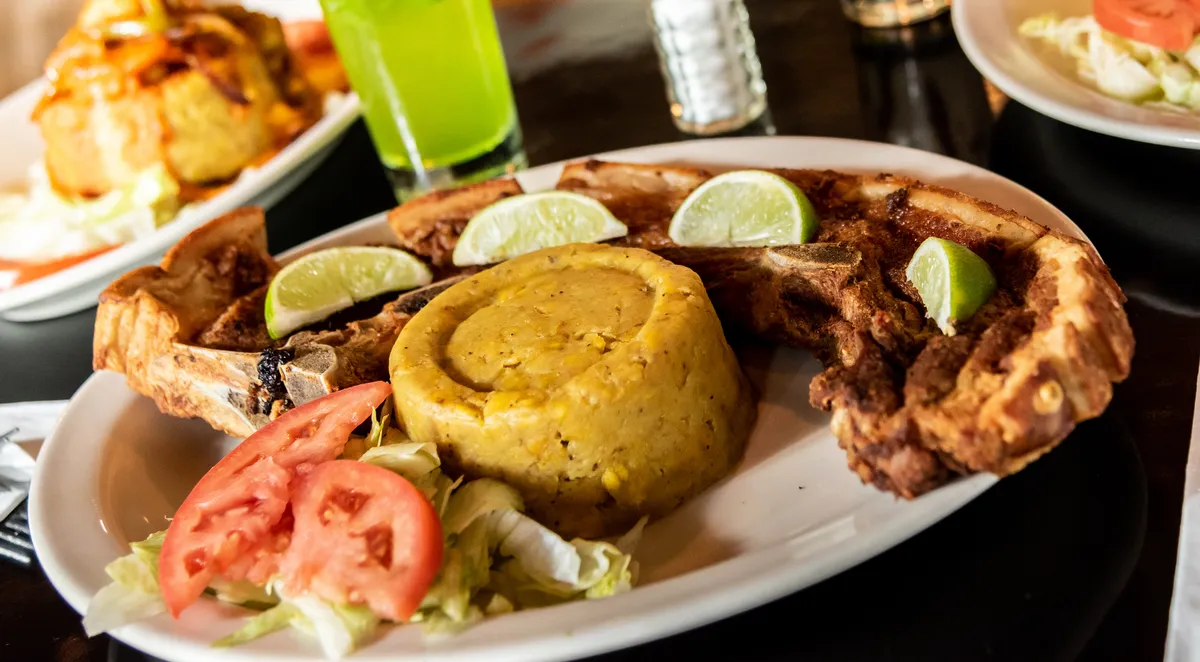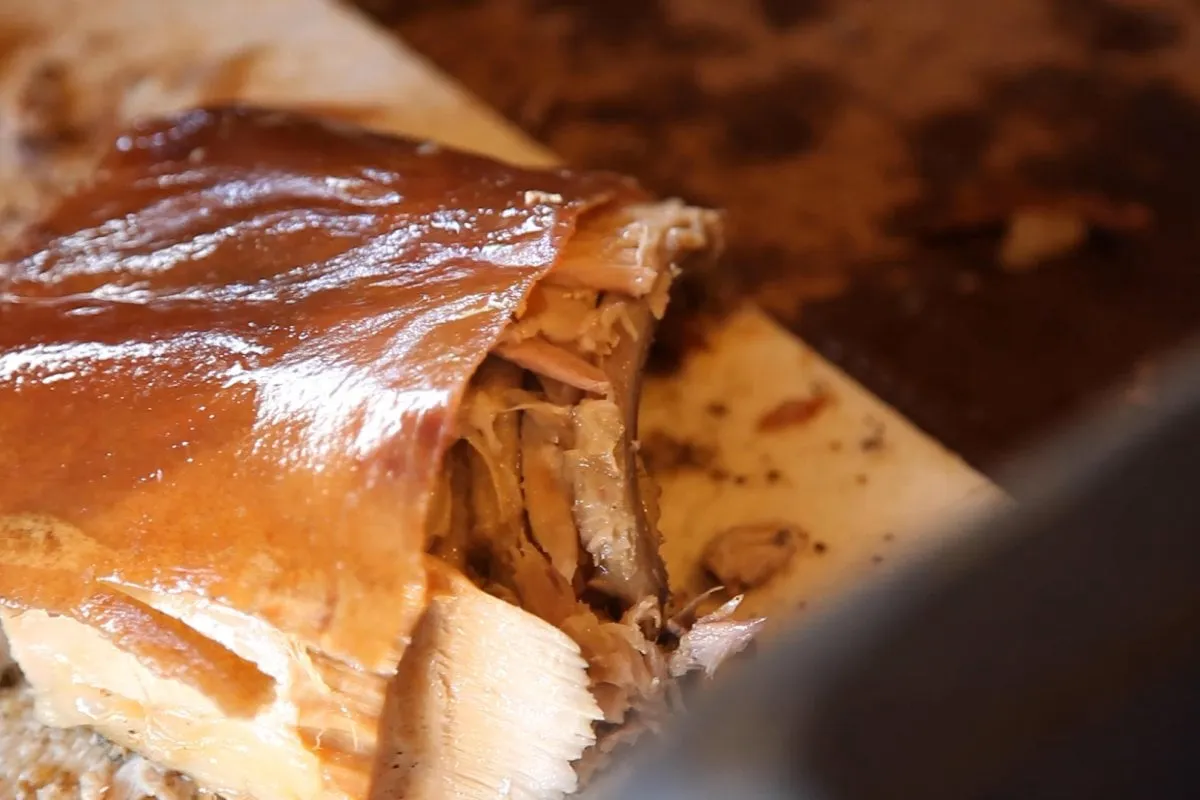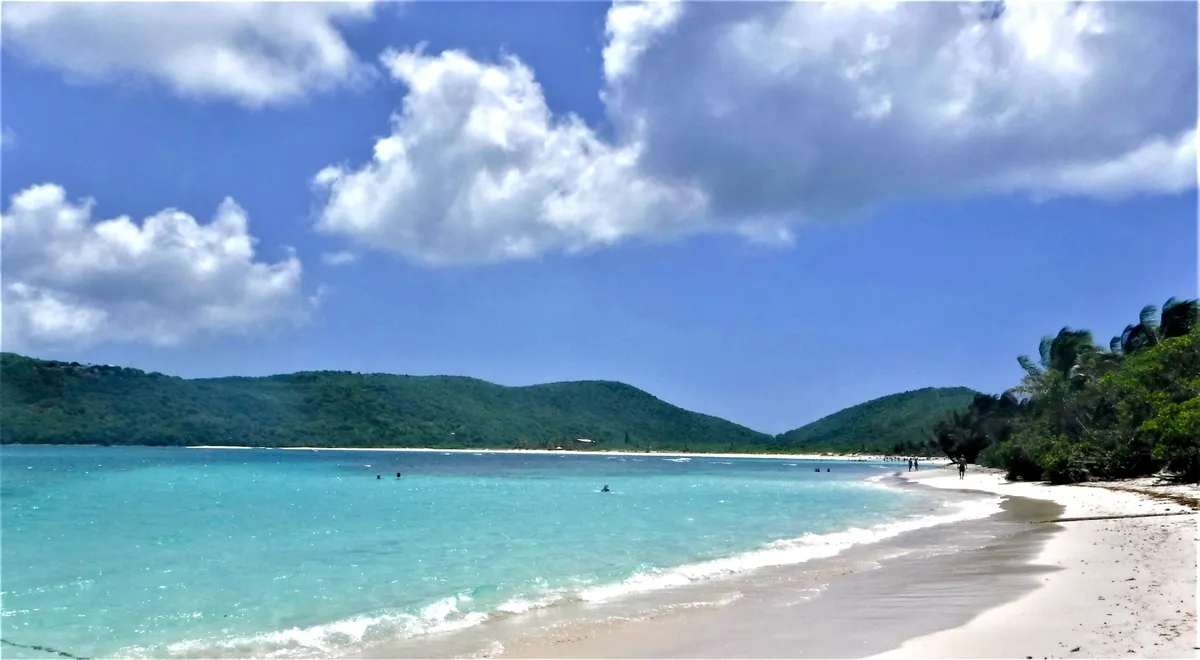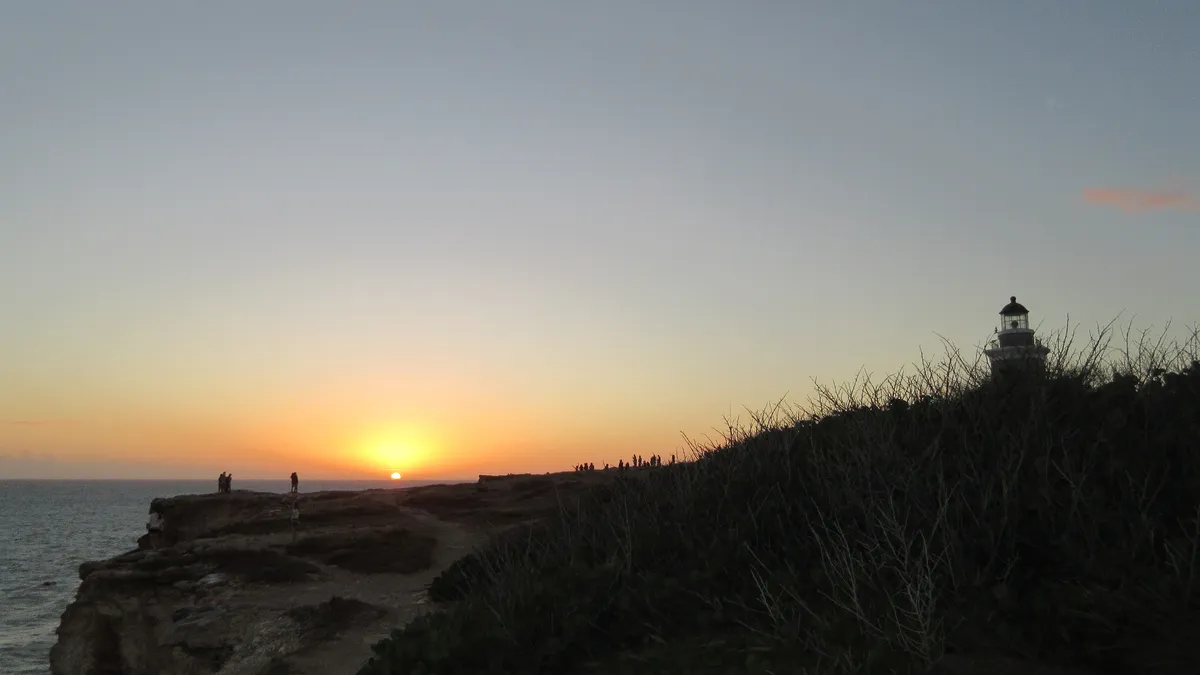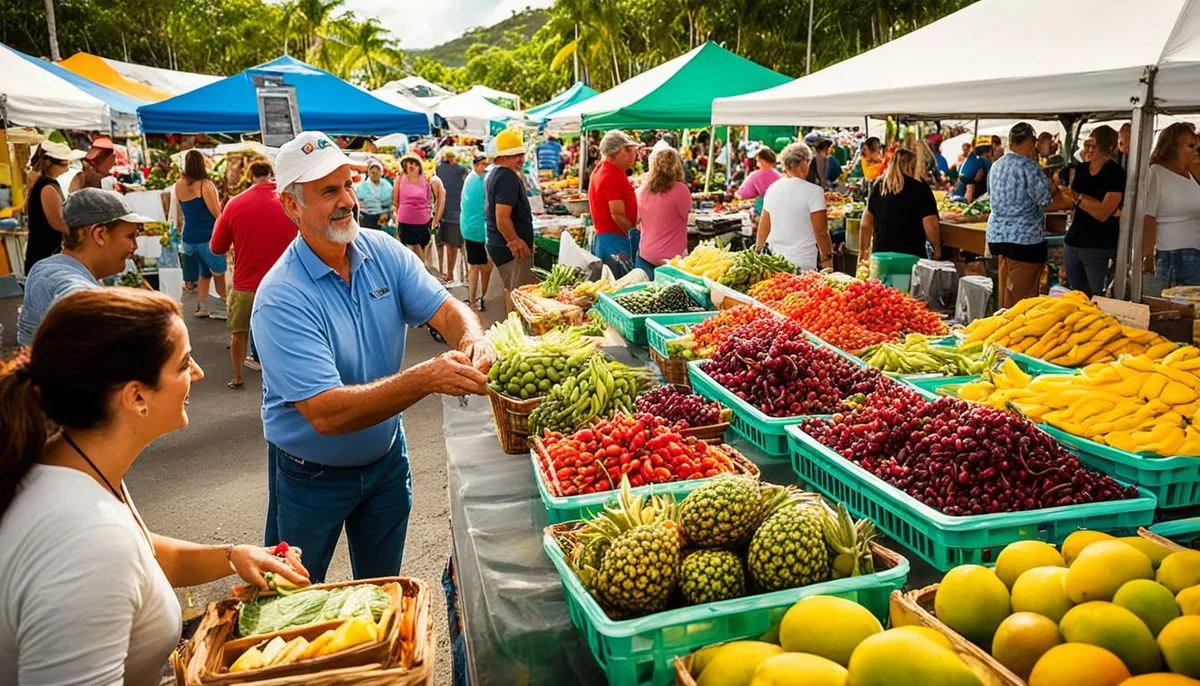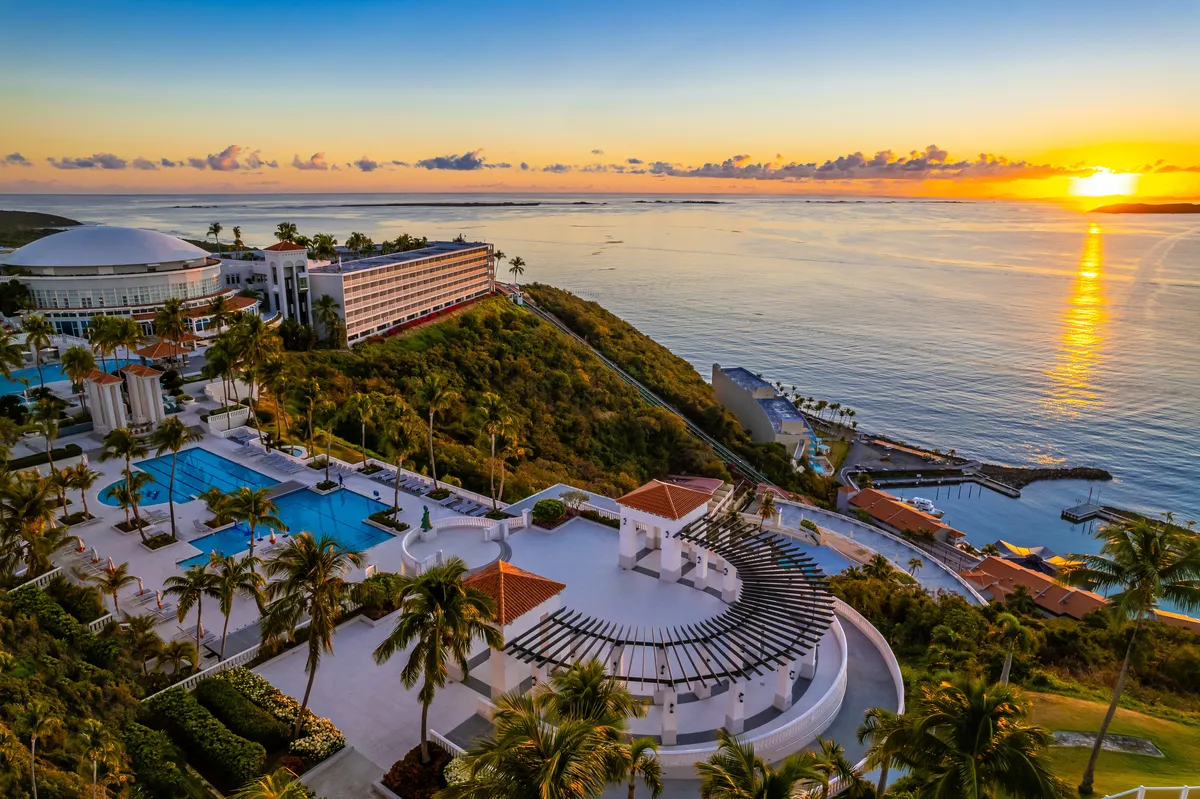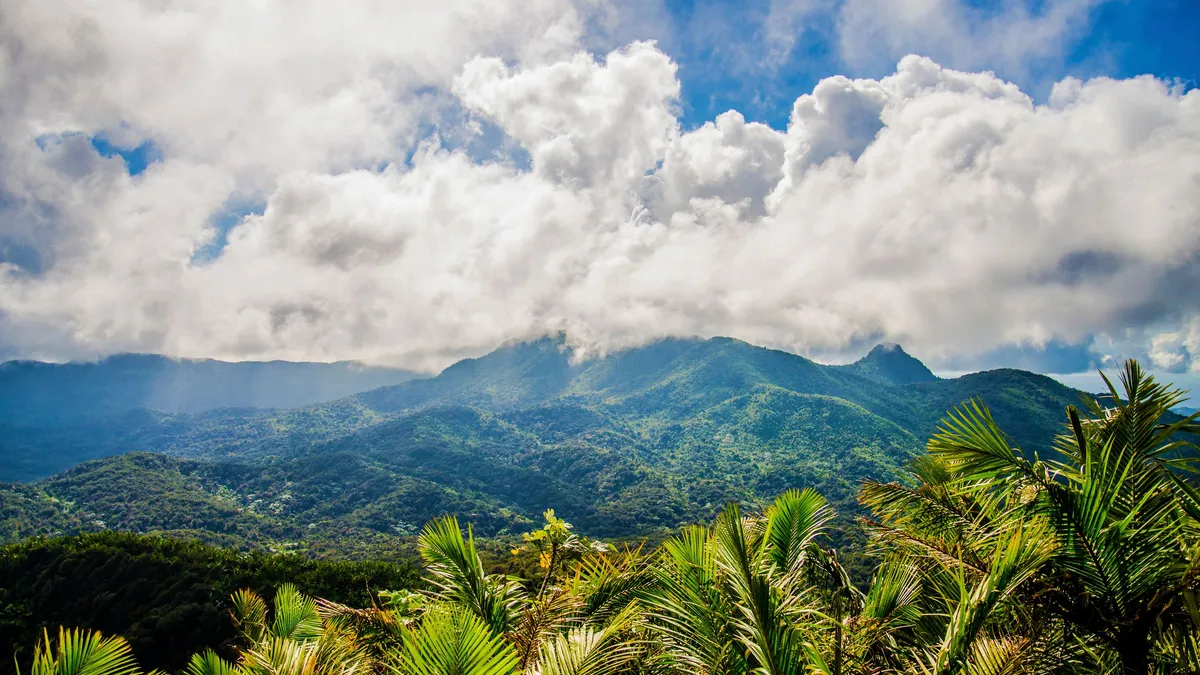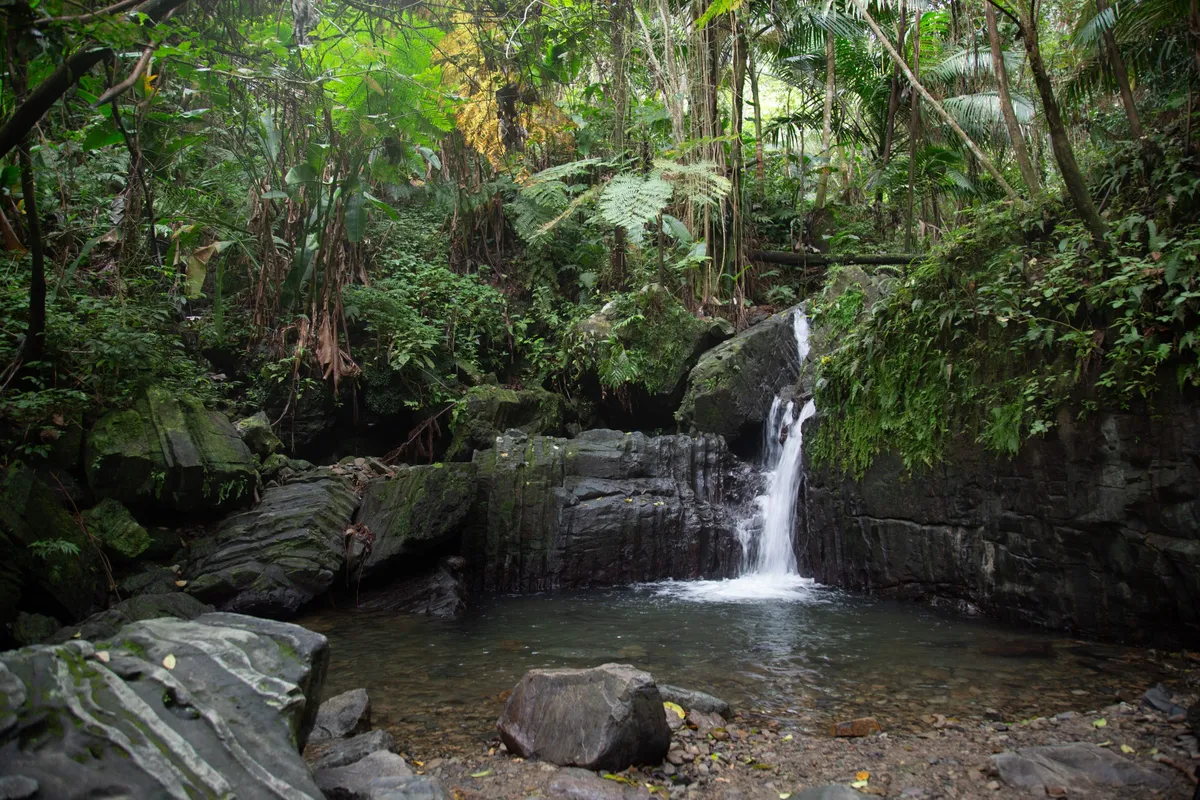Puerto Rico isn’t just another Caribbean destination—it’s where bioluminescent waters glow under your kayak paddle, where 500-year-old fortresses guard cobblestone streets, and where you can hike through the only tropical rainforest in the U.S. National Forest System before catching sunset waves at a world-class surf break. This guide brings you firsthand experience and authentic traveler reviews of the island’s most unforgettable Puerto Rico activities, from adrenaline-pumping adventures in the mountainous interior to serene moments on pristine beaches. Whether you’re planning a quick weekend escape or an extended exploration, you’ll find practical logistics, insider tips, and safety information to help you discover the heart and soul of La Isla del Encanto—the Enchanted Island.
Top 15 Puerto Rico Activities at a Glance
Before diving into the details, here’s your at-a-glance guide to the island’s premier experiences:
| Activity | Best For | Location/Region | Avg. Cost (per person) | Best Time to Go |
| Kayak in a Bioluminescent Bay | Nature Lovers, Adventure | Vieques, Fajardo, Lajas | $50 – $75 | New Moon |
| Hike in El Yunque National Forest | Nature Lovers, Families | Río Grande | $2 Reservation Fee | Weekday Morning |
| Explore Old San Juan’s Forts | History Buffs, Culture | San Juan | $10 (NPS Fee) | Late Afternoon |
| Snorkel with Turtles in Culebra | Watersports, Adventure | Culebra Island | $100 – $150 (Tour) | Dry Season (Dec-Apr) |
| Experience a San Juan Food Tour | Foodies, Culture | San Juan | $149+ | Beginning of Trip |
| Surf in Rincón | Watersports, Adventure | Rincón (West Coast) | $70+ (Lesson) | Winter (Oct-Apr) |
| Tour a Rum Distillery | Culture, Adults | Cataño / Bayamón | $40 – $80 | Weekday |
| Soar on “The Monster” Zipline | Adventure Seekers | Orocovis | $150+ | Clear Day |
| Relax on Flamenco Beach | Beach Lovers, Families | Culebra Island | $2 (Ferry) + Transport | Weekday |
| Day Trip to Cayo Icacos | Beach Lovers, Watersports | Fajardo | $100+ (Catamaran) | Calm Seas |
| Drive the “Pork Highway” | Foodies, Culture | Guavate (Cayey) | Varies | Weekend Afternoon |
| Discover Taíno Petroglyphs | History Buffs, Adventure | Arecibo / Utuado | Varies | Dry Season |
| Dance at La Placita de Santurce | Nightlife, Culture | San Juan | Varies | Thursday-Sunday Night |
| Visit a Historic Coffee Hacienda | Foodies, Culture | Central Mountains | Varies (Tour) | Harvest Season |
| See the Sunset at Cabo Rojo | Nature Lovers, Romance | Cabo Rojo (Southwest) | Free | Golden Hour |
Nature’s Magic: Kayaking the Bioluminescent Bays
One of the planet’s most enchanting natural phenomena is on full display in Puerto Rico, which is home to three of the world’s five major bioluminescent bays. This “magical light show” is created by microscopic, single-celled organisms called dinoflagellates that emit a bright blue-green glow when agitated in the water. The experience of paddling through this glowing water is consistently rated by travelers as “absolutely magical” and one of the top travel experiences of their lives.
Here’s what you need to know: the ethereal glow is notoriously difficult to capture on camera and often doesn’t resemble the highly saturated images you’ll see online. The best approach? Immerse yourself in the moment and let your eyes fully adjust to the darkness to appreciate the subtle, sparkling trails left by every paddle stroke. The brightness depends heavily on two factors—the lunar cycle and recent weather. For the most brilliant display, visit during a new moon when the sky is darkest. The driest months, from December to April, are ideal since heavy rainfall can introduce sediment and temporarily dim the glowing effect.
Mosquito Bay, Vieques: The World’s Brightest
Officially recognized by the Guinness World Records as the brightest bioluminescent bay in the world, Mosquito Bay on Vieques Island offers the most breathtaking display. Protected within a nature reserve with minimal light pollution, the concentration of dinoflagellates here is unparalleled. Reaching this natural wonder requires a dedicated trip to Vieques via ferry or small plane, but for those who make the journey, the reward is an unforgettable night of paddling through water that glitters with every touch. Tour operators offer guided kayak trips, often in clear-bottom kayaks, for around $60-75 per person.
Getting there: Ferry from Ceiba (around 40 minutes) or short flight from San Juan. Book ferry tickets well in advance through the official Puerto Rico Ferry website.
Laguna Grande, Fajardo: The Accessible Wonder
For visitors based in and around San Juan, Laguna Grande in Fajardo is the most popular and accessible option. The experience here involves a 25 to 30-minute paddle through mystical mangrove forest channels that open into the glowing lagoon. While it’s the brightest bio bay on the main island, traveler reviews sometimes note that light pollution from nearby developments can slightly diminish the effect compared to Vieques. However, the mangrove channels provide excellent darkness, and tour operators often use tarps to create a darker viewing environment. Numerous companies offer nightly kayak tours for approximately $58-60.
Accessibility: Easy day trip from San Juan metro area (about 45-minute drive).
La Parguera, Lajas: The Immersive Swim
Located on the southwest coast, La Parguera offers a completely different experience—it’s the only one of Puerto Rico’s bio bays where motorboats and swimming are permitted. This allows you to jump into the water and be surrounded by the glow, watching sparkles fall from your arms as you lift them from the water. While the brightness may not match Mosquito Bay, the ability to physically interact with the bioluminescence is a powerful draw. Small boat and kayak tours are available, often costing around $75.
Important note: Jellyfish can sometimes be present in the water, so check with your tour operator about current conditions.
Hiking El Yunque: A Guide to the U.S. Tropical Rainforest
A crown jewel of Puerto Rico’s natural treasures, El Yunque National Forest boasts incredible biodiversity, lush hiking trails, and a series of enchanting waterfalls and natural swimming pools. As the only tropical rainforest in the U.S. National Forest System, it’s an experience you literally can’t get anywhere else stateside. The forest’s soundtrack is provided by the ubiquitous coquí frog, whose distinctive call is a beloved symbol of the island.
The experience of visiting El Yunque has evolved significantly after hurricanes and subsequent recovery efforts, making planning more critical than ever. A reservation—which you can make online through Recreation.gov for a nominal $2 fee—is often required to enter the main recreational corridor along Road PR-191. Due to ongoing recovery construction, not all trails and sites may be open, so checking the official USDA Forest Service website for the latest “Recreation Conditions Report” before your visit is essential.
Getting There and Timing Your Visit
Getting to El Yunque isn’t possible via public transportation, so you’ll need to rent a car or book a guided tour. Arriving early, especially on a weekday, is your best bet for securing parking and enjoying popular spots like La Coca Falls and the Yokahú Observation Tower with fewer crowds.
- Best Time: Weekday mornings, ideally between 8-10 AM
- Reservation: Book at Recreation.gov ($2 per vehicle)
- Address: El Yunque National Forest, Río Grande, PR 00745
Essential Safety Tips for El Yunque
The terrain is often wet and can be extremely slippery, especially on paved trails and rocks near waterfalls—sturdy, treaded shoes are a must. The weather can change instantly, and sudden heavy downpours are common, so a poncho is far more practical than an umbrella on the narrow trails. Most importantly, if you’re swimming in the natural pools, stay vigilant for signs of flash flooding. If the river water begins to rise or turn muddy, get out of the water immediately.
According to visitor reports, the most popular trails include La Mina Trail (leading to a beautiful waterfall and swimming hole) and the El Yunque Summit Trail for panoramic views. However, trail conditions can change, so always verify which trails are open before your visit.
Explore Old San Juan’s 500 Years of History
A walk through Old San Juan is a journey back in time through 500 years of history. This UNESCO World Heritage Site captivates with its blue adoquine cobblestones, pastel-colored Spanish colonial buildings, and imposing fortresses that once defended the city from pirates and invading forces. While simply wandering the charming streets is an activity in itself, several historical sites are essential visits.
Castillo San Felipe del Morro
Standing guard at the entrance to San Juan Bay, “El Morro” is a six-level citadel built to protect the city from sea attacks. The fortress offers stunning ocean views, sprawling green lawns perfect for kite-flying, and a fascinating glimpse into military architecture spanning several centuries. Entry is $10 per person (valid for both El Morro and San Cristóbal for three days).
- Address: 501 Calle Norzagaray, San Juan, PR 00901
- Hours: Typically 9 AM – 6 PM daily
- Pro Tip: Visit in the late afternoon for spectacular golden hour photography and watch the sunset from the fortress walls.
Castillo San Cristóbal
On the eastern side of the city, San Cristóbal is the largest Spanish fortification in the Americas, designed to repel land-based attacks. The fortress features an impressive system of tunnels, dungeons, and five independent units connected by a moat and tunnels.
Beyond the Forts: Colonial Treasures
The Catedral de San Juan Bautista, founded in 1521, is the second-oldest cathedral in the Americas and holds the tomb of Juan Ponce de León, the island’s first governor. The beautifully restored Iglesia de San José is one of the finest examples of 16th-century Spanish Gothic architecture in the Western Hemisphere. Don’t miss walking through the iconic red Puerta de San Juan, which once served as the main gate to the city, leading to the scenic Paseo de la Princesa—a 19th-century promenade along the old city walls with beautiful bay views.
Insider Strategy: For cruise ship visitors or those short on time, take a taxi or Uber up the hill to El Morro and leisurely walk downhill through the city, stopping at key sites before heading back.
World-Class Snorkeling in Culebra and Beyond
While good snorkeling can be found across the island, the absolute best underwater experiences are concentrated around the offshore islands, particularly Culebra. This small, lightly developed island is a snorkeler’s paradise, boasting some of the healthiest coral formations and most abundant marine life in the Caribbean.
Here’s the reality check: traveling to Culebra isn’t just a casual day trip—it’s an expedition that requires careful planning. Firsthand accounts from travelers frequently advise against attempting a day trip from the main island, citing the unreliability of the ferry service from Ceiba and the necessity of on-island transportation to reach the best beaches. To truly experience Culebra’s underwater wonders, a minimum two-day trip with an overnight stay is highly recommended. This allows time to navigate the ferry or short flight, rent a Jeep or golf cart (essential for getting around), and explore multiple snorkeling sites at a relaxed pace.
Top Snorkeling Spots in Culebra
- Tamarindo Beach: The most reliable spot to swim with green sea turtles and graceful stingrays, often found grazing in the seagrass beds just offshore.
- Carlos Rosario Beach: Considered by many to be the best snorkeling spot, this secluded beach requires a 15-20 minute hike from the Flamenco Beach parking area but offers pristine, calm waters and a vibrant, healthy reef.
- Flamenco Beach: While famous for its stunning crescent of white sand, the reefs at the far ends of the beach offer excellent snorkeling, especially on the right side where visibility is often better.
- Culebrita: This tiny, uninhabited cay accessible only by water taxi offers astonishingly clear water and the chance to see manta rays and turtles.
Mainland Alternatives
For those unable to make the trip to Culebra, excellent day-trip options exist from Fajardo. Catamaran tours to the uninhabited island of Cayo Icacos are extremely popular, offering a full day of sailing and snorkeling in clear turquoise waters, typically including lunch and drinks for around $100+ per person. On the west coast, the Tres Palmas Marine Reserve in Rincón provides great shore-snorkeling during the calmer summer months.
Water Safety Essentials: Always snorkel with a buddy, use reef-safe sunscreen to protect the coral ecosystems, never touch or stand on coral, and check weather conditions before heading out. Be aware of currents and use a flotation device if you’re not a confident swimmer.
Surfing in Rincón: The Caribbean’s Surf Capital
On Puerto Rico’s northwest coast, Rincón stands as the undisputed “Surf Capital of the Caribbean.” During peak season from October to April, powerful Atlantic swells create world-class waves that attract surfers from around the globe. The local culture is deeply intertwined with surfing—it’s a community where bars might close early if a big swell is expected the next morning, and the rhythm of life is dictated by tides and forecasts.
Breaks for Every Skill Level
- For experts: Legendary spots like Tres Palmas come alive on massive swells, producing waves up to 25 feet that are strictly for experienced surfers. Maria’s Beach and Domes Beach are two of the most popular and consistent breaks, offering long, peeling rights over a reef bottom.
- For beginners: Beaches with sandy bottoms like Antonio’s Beach and Sandy Beach provide a more forgiving environment for learning. Surf lessons typically cost around $70 and up. On the island’s east coast, La Pared in Luquillo is another excellent beginner spot with consistent, gentle waves and numerous surf schools.
- Best Season: October through April for consistent, powerful waves
- Water Temperature: Warm year-round (78-82°F), wetsuit optional
- Lesson Cost: $70+ for 2-hour group lessons
The town itself offers a laid-back vibe with excellent restaurants, beachfront bars, and a welcoming surf community. Accommodation prices during peak surf season (December-March) can be 30-40% higher than summer months, so book early if you’re visiting during this window.
Rum Distillery Tours: Tasting Puerto Rico’s Spirit
As the undisputed “rum capital of the world,” no trip to Puerto Rico is complete without exploring its most famous export. The island offers two distinct distillery experiences that cater to different tastes.
Casa Bacardí: The Global Brand Experience
Located in Cataño, just a short ferry ride from Old San Juan, Casa Bacardí is the largest premium rum distillery in the world. It offers a polished, modern visitor experience with several tour options. The Legacy Tour ($40) covers the brand’s history, while the Rum Tasting Tour ($80) and Mixology Class ($80) provide more hands-on experiences. This is the tour for those interested in a world-famous brand with a global presence.
- Address: 165 Carretera 888, Cataño, PR 00963
- Getting there: Ferry from Pier 2 in Old San Juan (10-minute ride)
- Cost: $40-$80 depending on tour type
- Booking: Reservations recommended, especially on weekends
Ron del Barrilito: The Artisanal Heritage
For a more historic and intimate experience, visit Hacienda Santa Ana in Bayamón. Ron del Barrilito is the island’s oldest rum, crafted in the same artisanal way since 1880. Their tours, including the Heritage Tour and Tasting Tour, feel less like a corporate museum and more like stepping back in time, offering a glimpse into a cherished family legacy. Tours provide an authentic look at traditional rum-making methods that have remained unchanged for over 140 years.
- Address: Carretera 5, Km 2.5, Bayamón, PR 00956
- Best for: History buffs and rum enthusiasts seeking authenticity
- Pro Tip: Book ahead as tours are smaller and more personalized
Ziplining Through the Mountains: “The Monster” and Beyond
For an adrenaline-pumping perspective of Puerto Rico’s rugged interior, ziplining offers an unbeatable experience. The island is home to several world-class adventure parks that send you soaring over deep valleys and lush forest canopies.
Toro Verde Adventure Park
The most famous is Toro Verde Adventure Park in Orocovis, located in the heart of the central mountains. It’s renowned for “The Monster”—one of the longest ziplines in the world, with a cable stretching 2.5 kilometers (1.57 miles). Riders can reach speeds of up to 95 mph while suspended more than 380 meters high, making it the ultimate thrill for adrenaline junkies.
- Cost: Around $150+ per person
- Duration: Half-day experience
- Best Conditions: Clear days with good visibility
- Requirements: Weight and age restrictions apply
Rainforest Zipline Parks
Closer to San Juan, several operators offer ziplining experiences in the foothills of El Yunque. Parks like Rainforest Zipline Park feature a series of lines that crisscross the forest canopy, providing thrills combined with rainforest beauty. These tours typically last around two hours and cost between $79 and $99, making them a more accessible option for those based in the metro area.
Authentic Culinary Adventures in Puerto Rico
San Juan Food Tours: A Culinary Journey Through Culture
One of the best ways to get acquainted with both the history and flavors of the capital is through a guided walking food tour. Companies like Flavors of San Juan and Spoon offer expertly curated tours through Old San Juan that are consistently praised by travelers. Reviews frequently highlight the value of having a knowledgeable local guide who not only introduces participants to iconic dishes like mofongo (a savory mash of fried plantains) but also weaves in the history and cultural context behind the food.
These tours typically include multiple stops for everything from rich Puerto Rican coffee and savory appetizers to a full meal and a classic piña colada. Expect to sample local favorites including alcapurrias (fritters made from green banana and taro root dough stuffed with meat), tostones (fried plantain slices), and perhaps finish with a rum tasting.
- Cost: $149+ per person
- Duration: 3-4 hours
- Group Size: Typically limited to 12-15 people for a personal experience
- Pro Tip: Book this for the beginning of your trip to get recommendations from your guide for the rest of your stay.
The Pork Highway: La Ruta del Lechón in Guavate
To taste the most authentic local food, venture outside the city to Route 184 in the mountain town of Cayey. On weekends, locals and visitors alike make a pilgrimage to this road lined with lechoneras—open-air, rustic eateries specializing in lechón asado, whole pig slow-roasted over an open flame for hours until the skin is perfectly crispy.
The experience is a feast for all senses. The aroma of roasted pork fills the air, live salsa music creates a festive atmosphere, and the communal vibe makes you feel like you’re part of a weekend family gathering. You’ll find long picnic tables packed with locals enjoying plates piled high with succulent pork, rice and beans, and crispy morcilla (blood sausage).
- Essential Tip: The magic of Guavate happens on Saturdays and Sundays—many lechoneras are closed or have limited offerings on weekdays.
- Location: Route 184, Cayey (about 45-minute drive from San Juan)
- Cost: Very affordable—expect to pay $10-15 for a generous meal
- Best Time: Weekend afternoons (arrive by 1-2 PM for best selection)
Piñones Kiosks: Beachside Frituras
Just a short drive east of San Juan, the coastal area of Piñones offers a classic beachside culinary experience. A string of humble kiosks (chinchorros) serve up a delicious array of frituras (fried snacks). Must-try items include alcapurrias, bacalaítos (codfish fritters), and piononos (sweet plantain stuffed with ground beef). The kiosks line the road along the coast, and you can hop from one to another, sampling different specialties while enjoying ocean views.
Exploring the Island’s Rich Heritage
Historic Coffee Haciendas: From Bean to Cup
In the 19th century, Puerto Rican coffee was renowned throughout Europe and was even the preferred coffee of the Vatican. You can explore this rich history by touring a historic coffee plantation (hacienda) in the cool central mountains. Places like Hacienda Buena Vista in Ponce and Hacienda San Pedro in Jayuya offer tours that walk you through the entire process from bean to cup, culminating in a tasting of some of the world’s finest coffee.
These working plantations provide insight into the island’s agricultural heritage and the meticulous process of producing premium coffee.
- Best Time to Visit: Harvest season (September through December) for the full experience
- Cost: Varies by hacienda and tour type
- Duration: 1.5-2 hours typically
Exploring Taíno Heritage: Ancient Petroglyphs and Ceremonial Sites
The legacy of the island’s indigenous Taíno people can be explored at several important archaeological sites. The Cueva del Indio in Arecibo features dramatic seaside cliffs and a cave filled with ancient petroglyphs carved by the Taíno centuries before Columbus’s arrival. The site offers a powerful connection to the island’s pre-Columbian history.
Further inland, the Centro Ceremonial Indígena de Tibes in Ponce and the Parque Ceremonial Indígena de Caguana in Utuado are restored ceremonial grounds that offer profound insight into Taíno culture, including their ball courts, ceremonial plazas, and stone monoliths.
- Best Season: Dry season (December-April) for easier access and hiking conditions
- Cultural Significance: These sites provide essential context for understanding Puerto Rico’s indigenous roots
Afro-Caribbean Culture in Loíza
To understand the soul of Puerto Rico, you must look beyond its Spanish colonial history to its deeper African roots. Just east of San Juan, the town of Loíza is a vibrant center of Afro-Puerto Rican culture. An immersive tour here offers the chance to take a bomba class—a powerful and expressive dance and music style born from the island’s African heritage—and to visit studios of local artists whose work celebrates these traditions.
The experience provides a deeper understanding of the African influence on Puerto Rican music, dance, food, and cultural identity that is often overlooked in mainstream tourism.
Discovering Caribbean Paradise: Beaches and Sunsets
Flamenco Beach and Cayo Icacos
Beyond the snorkeling, Puerto Rico’s offshore islands offer some of the most stunning beaches in the Caribbean.
Flamenco Beach, Culebra
Consistently ranked among the world’s best beaches, Flamenco Beach features a mile-long crescent of powdery white sand and crystal-clear turquoise water. The beach offers calm waters perfect for swimming, rustic food kiosks, and the famous abandoned tanks that make for iconic photo opportunities. While getting here requires the same ferry or flight logistics as mentioned in the snorkeling section, the beach itself is worth the journey even if you’re not snorkeling.
- Ferry Cost: $2 per person from Ceiba (book well in advance online)
- On-Island Transport: Rent a Jeep, golf cart, or taxi from the ferry terminal
- Best Time: Weekdays to avoid weekend crowds
Cayo Icacos Catamaran Trips
From Fajardo, full-day catamaran excursions to this uninhabited island offer an all-inclusive experience of sailing, swimming, and snorkeling in pristine waters. The white sand beaches and clear turquoise lagoons make this a picture-perfect tropical getaway. Most tours include lunch, unlimited drinks, and snorkeling gear.
- Cost: $100+ per person
- Duration: Full day (typically 8 AM – 4 PM)
- Best Conditions: Calm seas, which are most common during summer months
Cabo Rojo Sunset: Nature’s Grand Finale
Located on the island’s southwest tip, Cabo Rojo offers one of the most spectacular sunset viewing locations. The iconic Los Morrillos Lighthouse sits atop dramatic white limestone cliffs overlooking the Caribbean Sea. The nearby Playuela (Playa Sucia) beach features crystal-clear water in shades of turquoise and aquamarine, backed by unique coastal geography.
The area is also known for the Cabo Rojo Salt Flats, where varying salinity levels create pools of water in different shades of pink, orange, and purple—a photographer’s dream, especially during golden hour.
- Cost: Free (parking may have a small fee)
- Best Time: Late afternoon into sunset
- Distance from San Juan: About a 2.5-hour drive
La Placita de Santurce: Where Locals Dance
For an authentic taste of Puerto Rican nightlife, head to La Placita de Santurce in San Juan. What starts as a traditional farmers’ market by day transforms into a vibrant street party on Thursday through Sunday nights. Salsa music spills out from crowded bars, locals dance in the streets with drinks in hand, and the energy is infectious.
This is where you’ll find San Juan residents unwinding after work, not a tourist trap—though visitors are warmly welcomed. The scene typically kicks off around 6 PM and can continue well past midnight.
- Location: Plaza del Mercado de Santurce, San Juan
- Best Nights: Thursday-Sunday
- Dress Code: Casual but stylish
- Safety Tip: Stay aware of your surroundings and take an Uber to/from the area
Planning Your Puerto Rico Adventure: Practical Essentials
Best Time to Visit Puerto Rico
Puerto Rico’s tropical climate makes it a year-round destination, but different seasons offer distinct advantages.
- Peak Season (December – mid-April): Best weather with endless sunny days, comfortable temperatures in the low 80s Fahrenheit, and minimal rain. This ideal window corresponds with the largest crowds and highest prices for flights and accommodations.
- Shoulder Season (mid-April – June): Often considered the sweet spot. The large winter crowds have departed, prices are more moderate, and the weather remains delightful before peak summer heat and rain arrive.
- Low Season (July – November): The hottest and wettest months, falling within Atlantic hurricane season (June 1 – November 30). While this season offers the best deals, be prepared for rain and maintain flexibility due to tropical storm risk.
Activity-Specific Timing:
- Surfing: October to April for consistent, powerful waves
- Snorkeling: December to April for best visibility (calmest seas April-August)
- Bioluminescent Bays: December to April during the dry season, always plan around the new moon
Getting Around: The Car Rental Decision
Your transportation choice is the single most important logistical decision, as it dictates the scope of your entire itinerary.
- San Juan-Centric Vacation (no car needed): For travelers staying primarily within the San Juan metropolitan area (including Old San Juan, Condado, and Isla Verde), a rental car isn’t necessary and can be a liability due to traffic and limited, expensive parking. This area is well-serviced by Uber, traditional taxis, and a public bus system (AMA). You can enjoy the city’s beaches, history, and nightlife, and take guided tours (with transportation included) to major attractions like El Yunque and the Fajardo bio bay.
- Island Exploration (car essential): For anyone wishing to explore beyond the metro area—visiting the surf towns of the west coast, the mountains, or the southern beaches—renting a car is absolutely essential. Public transportation outside San Juan is extremely limited and not practical for tourists. All major rental agencies operate at Luis Muñoz Marín International Airport (SJU), and driving allows ultimate freedom to discover hidden gems.
Reaching Vieques and Culebra
- Ferry: The most economical option departs from the terminal in Ceiba. The trip to Culebra takes about an hour, while Vieques is around 40 minutes. Tickets are inexpensive (around $2 per person) but should be booked online well in advance, especially for weekend travel, via the official Puerto Rico Ferry website or City Experiences app. The service can be subject to delays or cancellations, particularly during winter months when seas are rougher.
- Flying: Several small airlines offer quick 20-30 minute flights to Vieques and Culebra from both the main international airport (SJU) and the smaller Isla Grande Airport (SIG) in San Juan. While significantly more expensive than the ferry, flying is faster and more reliable for travelers with limited time.
Sample Itineraries
3-Day San Juan and Rainforest Escape:
- Day 1: Explore the forts and colorful streets of Old San Juan.
- Day 2: Morning hike in El Yunque, afternoon at Luquillo Beach, dinner at the food kiosks.
- Day 3: Relax on Condado Beach, evening kayak tour of the bioluminescent bay in Fajardo.
5-Day West Coast Surf and Snorkel Adventure:
- Base in Rincón for surfing (2 days of lessons or riding waves).
- Day trip south to Cabo Rojo for Los Morrillos Lighthouse and Playuela beach.
- Dedicate final 2 days to an overnight expedition to Culebra for world-class snorkeling.
7-Day Ultimate Island Explorer:
- Spend 2 days in the San Juan area.
- Rent a car and drive through the central mountains, stopping at a coffee hacienda and Guavate for the “Pork Highway.”
- Continue to the west coast for 2 days of surfing and sunsets in Rincón.
- Head back east for a final day of relaxation or a catamaran trip from Fajardo.
Puerto Rico offers a staggering diversity of Puerto Rico activities packed into one sun-kissed Caribbean paradise. A single day can include a hike through a misty rainforest, a journey through 500 years of history, and a swim in waters that glow with their own otherworldly light. From the “rainforest of the sea” surrounding Culebra to the legendary surf breaks of Rincón, the island presents unique adventures around every corner. The true magic of Puerto Rico is found in spontaneous moments—the shared meal at a bustling lechonera, the sound of the coquí at night, the warmth of its people. The island isn’t just a place to see; it’s a collection of unforgettable experiences waiting to be felt, where every activity connects you deeper to the spirit of La Isla del Encanto.
Read more:
